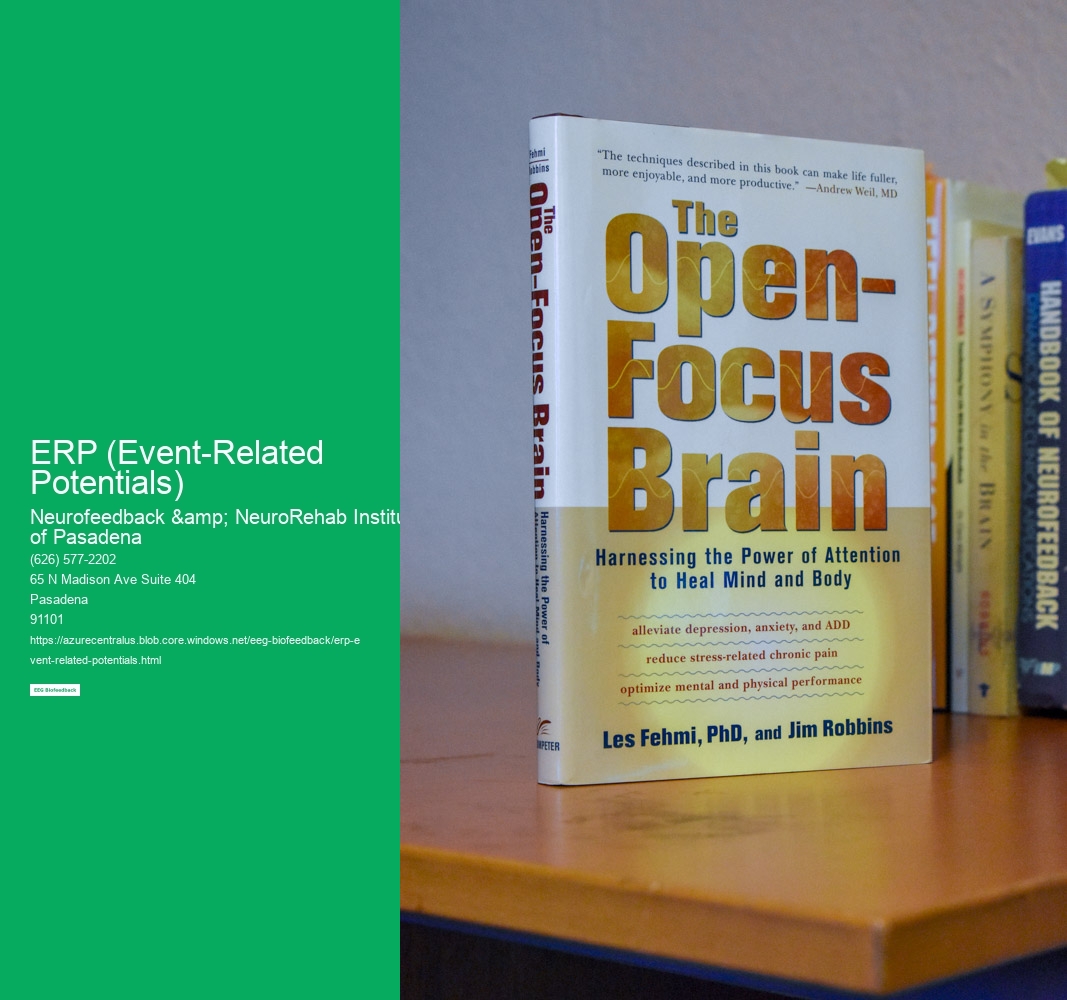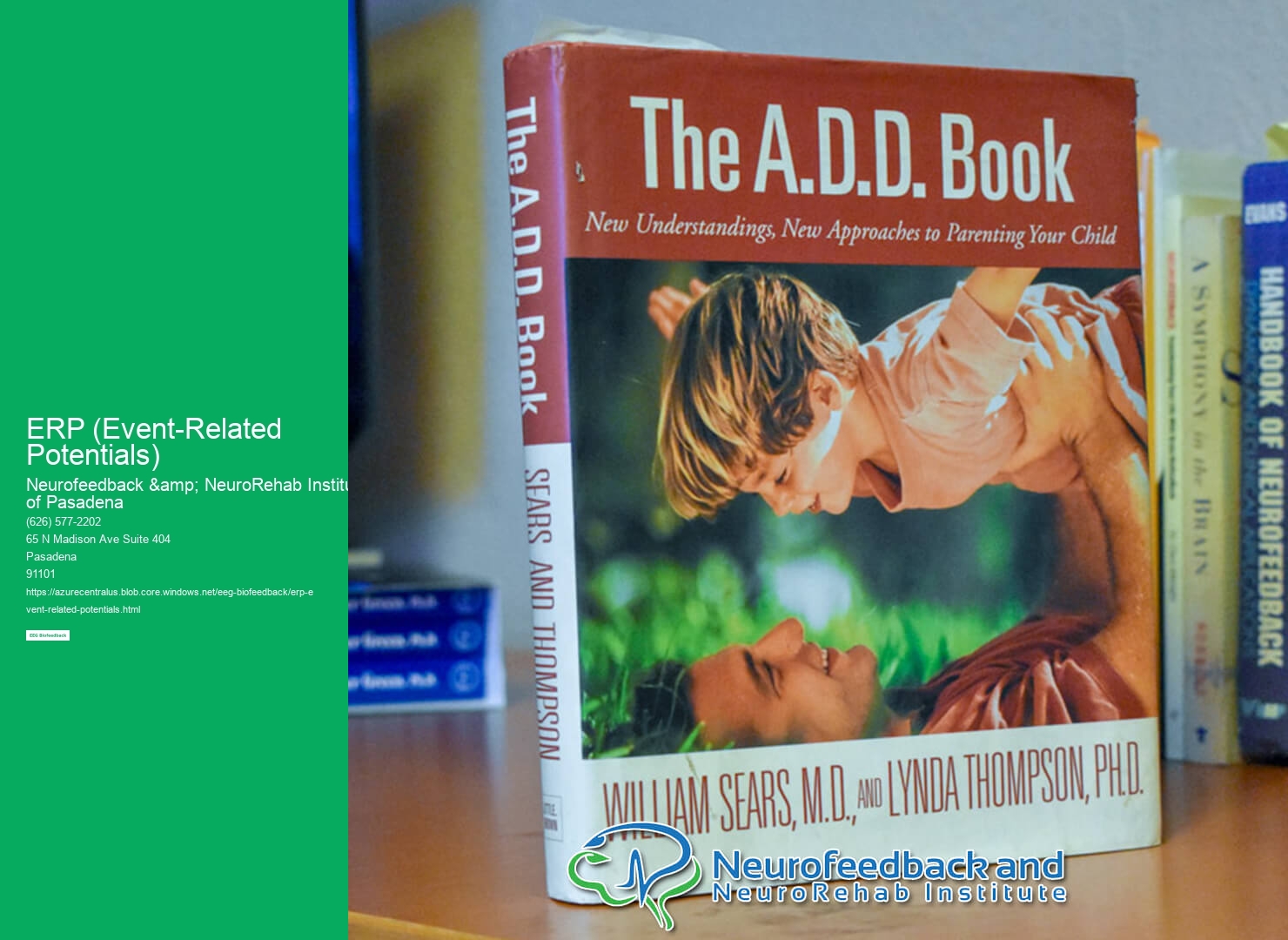

Event-related potentials (ERPs) are electrical brain responses that occur in response to specific events or stimuli. They are measured using electroencephalography (EEG), which involves placing electrodes on the scalp to detect and record the electrical activity of the brain. ERPs are time-locked to the onset of the stimulus, allowing researchers to examine the brain's response to different types of stimuli, such as visual or auditory stimuli. By analyzing the amplitude and latency of specific components of the ERP waveform, researchers can gain insights into cognitive processes and neural activity associated with perception, attention, memory, and language processing.
ERPs provide valuable information about the underlying cognitive processes involved in various tasks. Different components of the ERP waveform are associated with specific cognitive processes, such as the P300 component reflecting attention and memory processes. By examining the amplitude and latency of these components, researchers can infer the cognitive processes at play during a particular task. For example, the N400 component is often used to study semantic processing in language comprehension tasks. By analyzing the ERP data, researchers can determine how the brain processes and understands language, providing insights into language comprehension and production.
Researchers use ERPs to study language processing by presenting participants with linguistic stimuli, such as words or sentences, and analyzing the brain's response to these stimuli. For example, the N400 component of the ERP waveform is often used to investigate semantic processing in language comprehension. By comparing ERPs elicited by different types of words or sentences, researchers can examine how the brain processes and understands language at the semantic level. Additionally, ERPs can be used to study syntactic processing by analyzing components such as the P600, which is associated with grammatical processing. By manipulating the structure or grammar of sentences, researchers can investigate how the brain processes and integrates syntactic information during language comprehension.

Yes, ERPs can be used to investigate the effects of drugs or medications on brain activity. By comparing ERPs recorded before and after drug administration, researchers can examine how the drug affects neural processing. For example, ERPs can be used to study the effects of psychoactive drugs on cognitive processes such as attention, memory, and language processing. By analyzing changes in ERP components, researchers can gain insights into the neural mechanisms underlying the effects of drugs on brain activity. This information can be valuable for understanding the therapeutic effects of medications or identifying potential side effects.
ERPs have various applications in clinical settings. They can be used to assess cognitive function and detect abnormalities in brain activity. For example, ERPs can be used to diagnose and monitor conditions such as epilepsy, attention deficit hyperactivity disorder (ADHD), and Alzheimer's disease. By comparing the ERP responses of individuals with these conditions to those of healthy individuals, clinicians can identify specific patterns or abnormalities in brain activity. ERPs can also be used to evaluate the effectiveness of interventions or treatments for neurological or psychiatric disorders, providing objective measures of treatment outcomes.


Researchers analyze and interpret ERP data by examining the amplitude and latency of specific components of the ERP waveform. Statistical techniques, such as analysis of variance (ANOVA) or t-tests, are often used to compare ERP responses between different conditions or groups. Additionally, researchers may use source localization techniques to identify the brain regions involved in generating specific ERP components. The interpretation of ERP data involves relating the observed ERP patterns to specific cognitive processes or neural mechanisms. This requires integrating findings from previous research and theoretical frameworks to provide a comprehensive understanding of the cognitive processes underlying the observed ERP responses.
There are some limitations and challenges associated with using ERPs in research. One limitation is that ERPs provide a relatively indirect measure of brain activity, as they reflect the summed electrical activity of large populations of neurons. This can make it challenging to pinpoint the exact neural mechanisms underlying specific ERP components. Additionally, ERPs can be influenced by various factors, such as participant characteristics, electrode placement, and task demands. Ensuring the reliability and validity of ERP data requires careful experimental design, data preprocessing, and statistical analysis. Furthermore, the interpretation of ERP data can be complex, as multiple cognitive processes may contribute to the observed ERP responses. Therefore, researchers need to consider multiple factors and integrate findings from different studies to draw meaningful conclusions from ERP data.

In recent years, there have been significant advancements in EEG biofeedback technology. These advancements have focused on improving the accuracy, portability, and usability of EEG devices. One notable advancement is the development of wireless EEG systems, which eliminate the need for cumbersome wires and allow for greater freedom of movement during EEG sessions. Additionally, there have been improvements in signal processing algorithms, which enhance the ability to detect and interpret brainwave patterns. This has led to more precise and reliable feedback for users. Furthermore, there have been advancements in the integration of EEG biofeedback technology with virtual reality and gaming platforms, creating immersive and engaging experiences for users. These advancements have made EEG biofeedback technology more accessible and user-friendly, opening up new possibilities for its application in various fields such as healthcare, sports performance, and mental wellness.
The delta-theta ratio is a key parameter in EEG biofeedback for relaxation. EEG biofeedback, also known as neurofeedback, is a non-invasive technique that aims to train individuals to self-regulate their brain activity. The delta-theta ratio refers to the ratio between the slow delta waves (0.5-4 Hz) and the theta waves (4-8 Hz) in the brain's electrical activity. A high delta-theta ratio is often associated with increased drowsiness and decreased alertness, while a low ratio is indicative of a more relaxed and focused state. By providing real-time feedback on the delta-theta ratio, individuals can learn to modulate their brainwaves and achieve a state of deep relaxation. This can be particularly beneficial for individuals experiencing stress, anxiety, or sleep disturbances, as it helps promote a calm and tranquil mental state.
EEG biofeedback, also known as neurofeedback, has shown promising results in the treatment of mood disorders such as depression. This non-invasive technique involves monitoring and training brainwave activity to regulate and optimize brain functioning. By providing real-time feedback on brainwave patterns, individuals with depression can learn to self-regulate their brain activity and improve their mood. Research studies have demonstrated that EEG biofeedback can lead to significant reductions in depressive symptoms, including improvements in mood, sleep, and overall well-being. Additionally, this therapy has been found to have long-lasting effects, with many individuals experiencing sustained improvements even after the treatment has ended. EEG biofeedback offers a safe and effective alternative or adjunct to traditional treatments for depression, providing individuals with a non-pharmacological option to manage their symptoms and improve their quality of life.
When considering EEG biofeedback in geriatric populations, there are several important factors to take into account. Firstly, it is crucial to consider the cognitive abilities and limitations of older adults, as this may impact their ability to engage in and benefit from the biofeedback training. Additionally, the physical health and mobility of geriatric individuals should be considered, as they may have limitations that affect their ability to participate in the sessions. Furthermore, the specific neurological conditions and comorbidities commonly seen in the geriatric population, such as dementia or Parkinson's disease, should be taken into account when designing the biofeedback protocols. Lastly, the overall goals and expectations of the individual and their caregivers should be considered, as this will help tailor the biofeedback training to their specific needs and preferences. By considering these factors, EEG biofeedback can be effectively and safely utilized in geriatric populations to improve cognitive function and overall well-being.
When considering the potential adverse effects or contraindications of EEG biofeedback, several factors are taken into account. Firstly, the individual's medical history and current health condition are thoroughly assessed to identify any pre-existing conditions or medications that may interact negatively with the treatment. Additionally, the specific type of EEG biofeedback being used is considered, as different protocols may have varying risks and contraindications. The expertise and qualifications of the practitioner administering the treatment are also important, as their knowledge and experience can help minimize any potential adverse effects. Furthermore, the individual's age, cognitive abilities, and ability to comply with the treatment protocol are taken into consideration to ensure that the benefits outweigh any potential risks. Overall, a comprehensive evaluation of the individual's unique circumstances is essential in order to mitigate any potential adverse effects or contraindications of EEG biofeedback.
EEG coherence is measured and interpreted in biofeedback sessions using specialized equipment and software. During a biofeedback session, electrodes are placed on the scalp to measure the electrical activity of the brain. The EEG coherence is then calculated by analyzing the synchronization of brain waves between different electrode sites. This measurement provides information about the connectivity and communication between different brain regions. High coherence values indicate strong synchronization and efficient communication, while low coherence values suggest weaker connectivity. In biofeedback sessions, the interpretation of EEG coherence involves comparing the individual's coherence values to normative data or baseline measurements. This allows the practitioner to identify areas of the brain that may be overactive or underactive and guide the individual in regulating their brain activity through various techniques and exercises. By training individuals to increase or decrease coherence in specific brain regions, biofeedback sessions aim to improve overall brain function and promote optimal mental and emotional well-being.
EEG biofeedback, also known as neurofeedback, plays a crucial role in enhancing neuroplasticity. By providing real-time information about brain activity, EEG biofeedback allows individuals to gain awareness and control over their brainwaves. This process involves the use of specialized equipment to measure electrical activity in the brain and provide feedback to the individual. Through repeated sessions of EEG biofeedback, individuals can learn to regulate their brainwaves and optimize their brain function. This enhanced control over brain activity leads to increased neuroplasticity, which is the brain's ability to reorganize and form new connections. Neuroplasticity is essential for learning, memory, and overall cognitive function. By promoting neuroplasticity, EEG biofeedback can help individuals improve their cognitive abilities, enhance their learning capacity, and recover from brain injuries or neurological disorders.